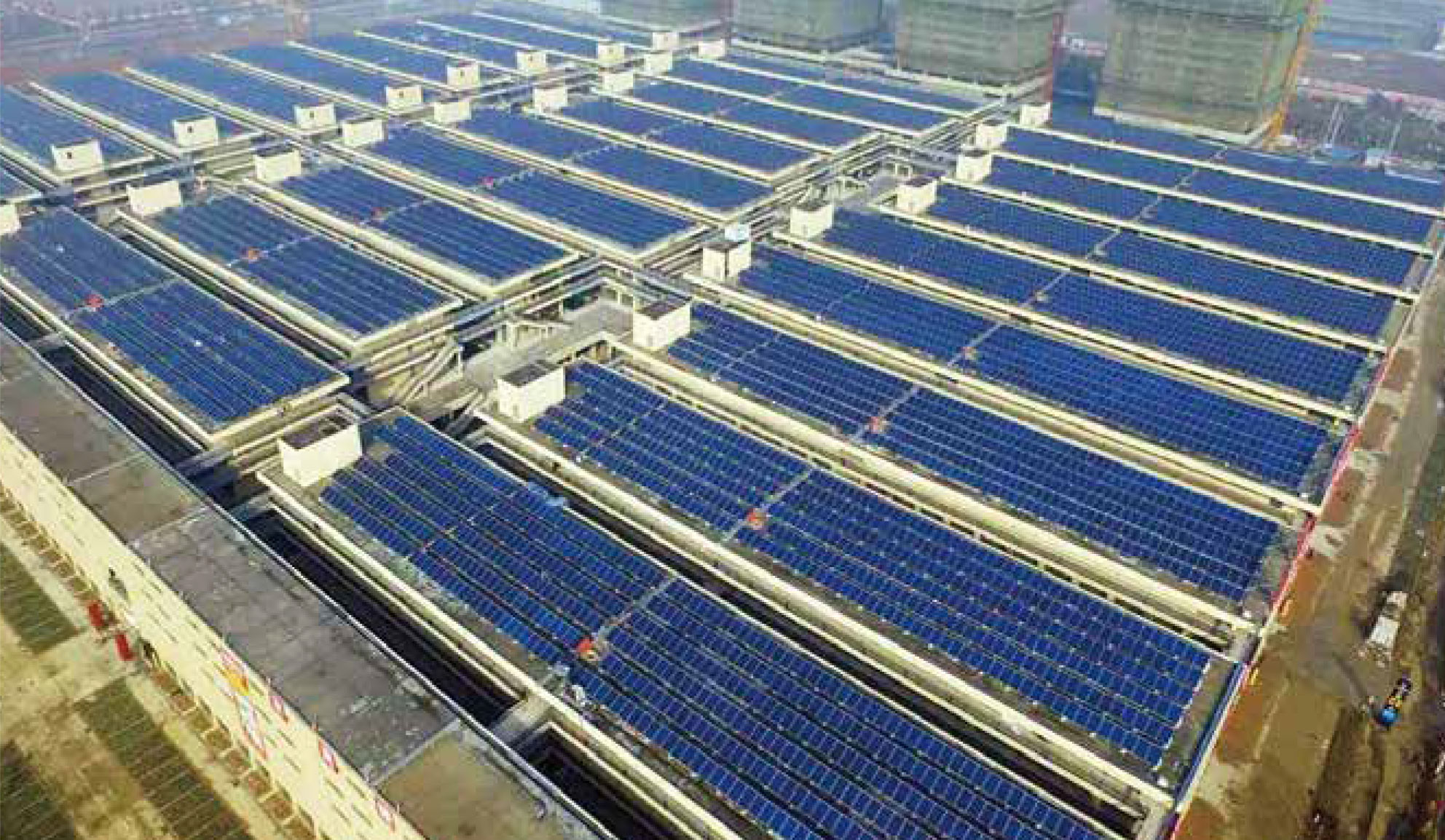光伏发电是利用半导体界面的光生伏特效应,将光能直接转变为电能的一种技术。主要由太阳能电池板(组件)、控制器和逆变器三大部分组成,主要部件由电子元器件构成。太阳能电池经过串联后进行封装保护,可形成大面积的太阳能电池组件,再配合上控制器等部件就形成了光伏发电装置。光伏发电的优点太阳能资源分布广泛且取之不尽、用之不竭。
Photovoltaic power generation is a technology that utilizes the photovoltaic effect of semiconductor interfaces to directly convert light energy into electrical energy. It mainly consists of three parts: solar panels (components), controllers, and inverters, with the main components composed of electronic components. After being connected in series and packaged for protection, solar cells can form a large area of solar cell components, which, in conjunction with components such as controllers, form a photovoltaic power generation device. The advantages of photovoltaic power generation are that solar energy resources are widely distributed and inexhaustible.
因此,光伏发电是一种

具可持续发展理想特征(丰富的资源和洁净的发电过程)的可再生能源发电技术,具有以下主要优点
Therefore, photovoltaic power generation is a renewable energy generation technology with the most sustainable development ideal characteristics (the richest resources and the cleanest power generation process), which has the following main advantages
1、太阳能资源取之不尽,用之不竭,照射到地球上的太阳能要比人类目前消耗的能量大6000倍。而且太阳能在地球上分布广泛,只要有光照的地方就可以使用光伏发电系统,不受地域、海拔等因素的限制。
1. Solar energy resources are inexhaustible, and the amount of solar energy that shines on Earth is 6000 times greater than the energy currently consumed by humans. Moreover, solar energy is widely distributed on Earth, and photovoltaic power generation systems can be used wherever there is light, regardless of geographical or altitude limitations.
2、太阳能资源随处可得,可就近供电,不必长距离输送,避免了长距离输电线路所造成的电能损失。
2. Solar energy resources are readily available and can be supplied locally without the need for long-distance transmission, avoiding energy losses caused by long-distance transmission lines.
3、光伏发电的能量转换过程简单,是直接从光能到电能的转换,没有中间过程(如热能转换为机械能、机械能转换为电磁能等)和机械运动,不存在机械磨损。根据热力学分析,光伏发电具有很高的理论发电效率,可达80%以上,技术开发潜力巨大。
3. The energy conversion process of photovoltaic power generation is simple, directly converting light energy to electrical energy, without intermediate processes (such as converting thermal energy to mechanical energy, converting mechanical energy to electromagnetic energy, etc.) and mechanical motion, and there is no mechanical wear and tear. According to thermodynamic analysis, photovoltaic power generation has a high theoretical power generation efficiency of over 80%, and has great potential for technological development.
 具可持续发展理想特征(丰富的资源和洁净的发电过程)的可再生能源发电技术,具有以下主要优点
具可持续发展理想特征(丰富的资源和洁净的发电过程)的可再生能源发电技术,具有以下主要优点

 TEL:0531-82390078
TEL:0531-82390078 TEL:18805312017
TEL:18805312017 MAI:sdzdny001@163.com
MAI:sdzdny001@163.com 公司地址: 济南市历下区山大路157号
公司地址: 济南市历下区山大路157号 天合蓝天·山东种电
天合蓝天·山东种电 备案号:鲁ICP备17052940号-2
鲁公网安备37010202700164号
备案号:鲁ICP备17052940号-2
鲁公网安备37010202700164号
 网站地图|XML|TXT
网站地图|XML|TXT

